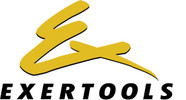The HUMAC360 is compatible with any linear motion machine - for example, a weight stack machine. To install simply attach the HUMAC 360 belt to the weight stack. As the weight moves so will the patient marker on the screen. Or you have a patient hold the belt in their hand during an arm curl or shoulder internal/external rotation.
Early stage physical therapy is all about motor control -- move a limb where you want, when you want, at the velocity you want. The HUMAC360 Exercise Guidance System provides a visual goal during exercise that clearly shows where one needs to move (Range-of-Motion), when one should move (Reaction), and a what velocity one should move(Speed).
This closed-loop approach during exercise makes it easy for patients to understand what is being asking of them, to self-correct their performance in real-time, and provides an objective training goal for their next visit. For the clinician implementing closed-loop training means less time will be spent explaining exercise and more time will be spent review performances and getting motivated patients to the next level.
How it Works
The HUMAC360 consists of a 4” x 4” x 4” box with a 16’ belt connected to a potentiometer inside, HUMAC Software, and a 12’ USB Cable. Computer not included. To use simply attach the belt to a weight stack machine, TotalGym, or directly to a patient (Ex. Hip during Leg Squat) . Then select a visual goal (Pacing, Measurement, or Game) for the patient to follow. The patient moves to match the on-screen moving visual goal.
Three Bad Reps and Out
The HUMAC360 monitors every repetition during exercise. In some modes if the patient performs three successive bad repetitions based on ROM, Velocity, and Smoothness the exercise is stopped. At the conclusion of every exercise patients are provided an objective measurement of their performance. This is what we call “measurement training.” While training patients are being measured so the clinician and patient always know where they stand along the rehabilitation process.




